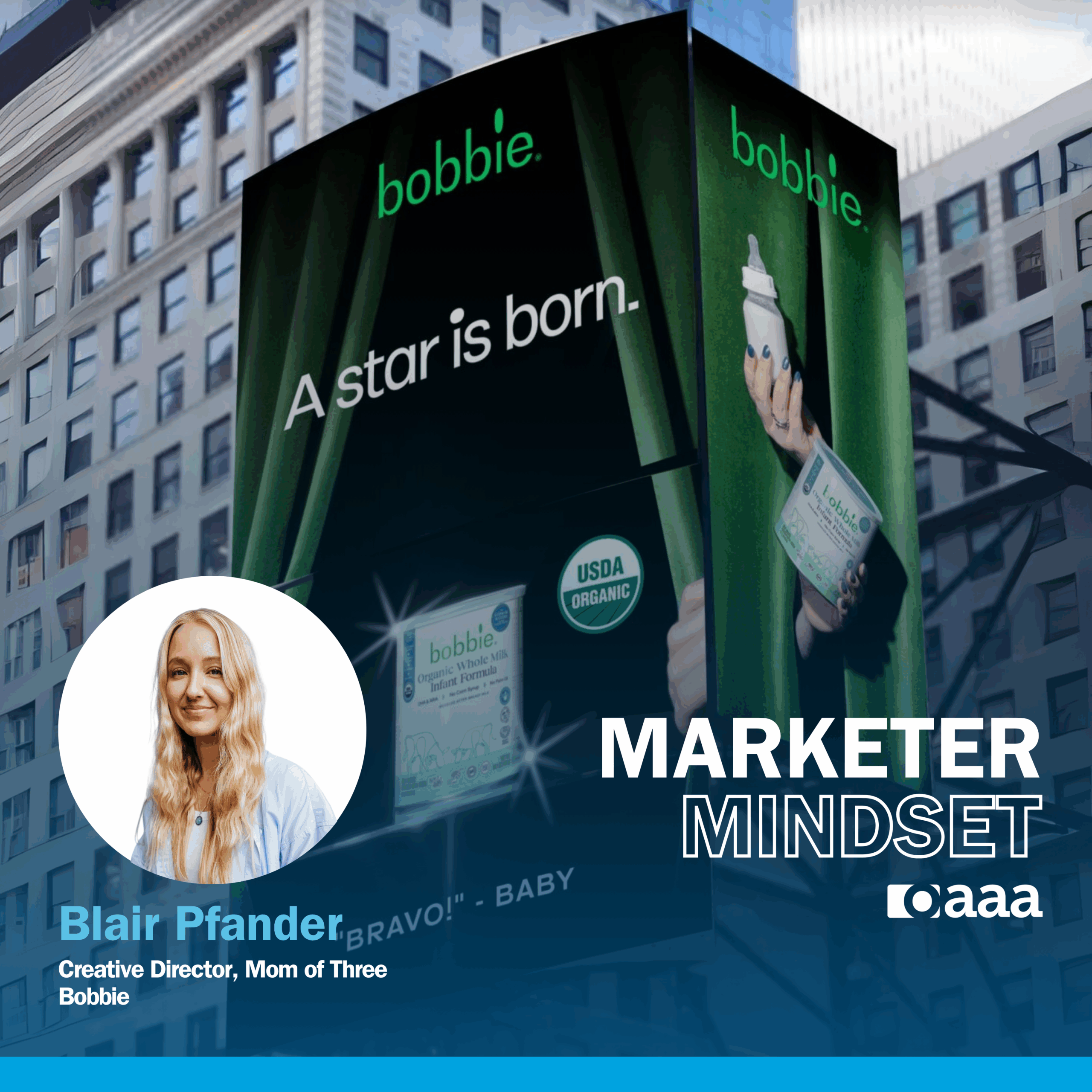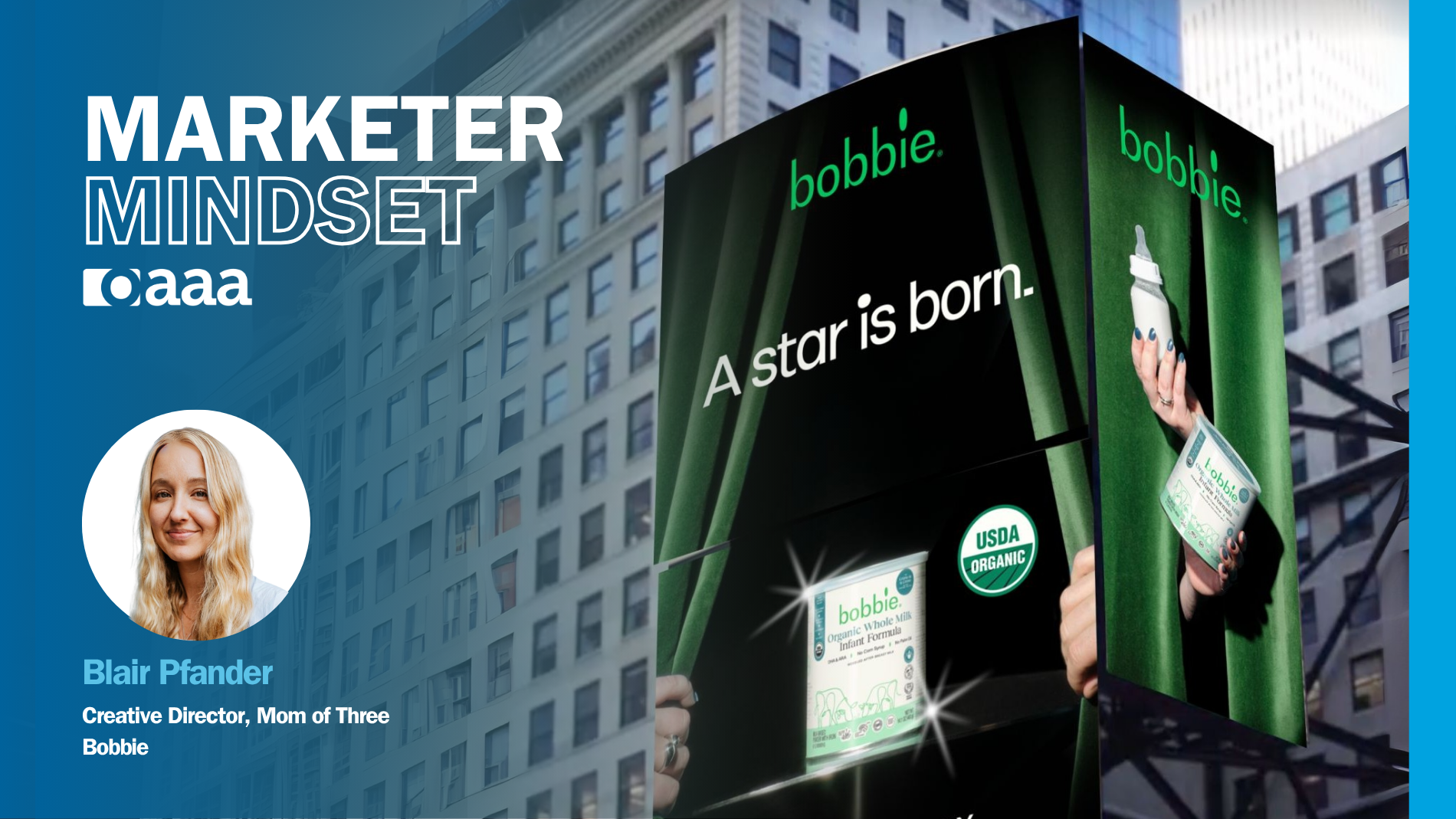
Every month, OAAA’s marketing team sits down with a brand marketer to discuss creativity in OOH, the role OOH plays in the media mix, and their perspective on the future of advertising. This month, Blair Pfander, Creative Director at Bobbie, shares the role of OOH in their media mix, how they balance creativity and data and how she sees the future of advertising evolving.
Read Blair’s Q&A here.
What role does out of home play in your media mix?
In a heavily regulated Industry like infant formula, we have to be really thoughtful about where and how we show up. Out of home is where we go loud. It gives us an opportunity to be both provocative and educational in the public square.
We’ve embraced that tension from the start. Almost three years ago, we put Ashley Graham on a Canal Street billboard, combo feeding her twins under the tag, “No one size feeds all.” It was honest and unapologetic, and exactly the kind of image we thought was missing from the public conversation around feeding our babies. This past fall, we brought Molly Baz back to Times Square feeding her son with breastmilk and Bobbie. It was the first time a mom was ever shown breastfeeding in a space typically dominated by tech drops and sneaker ads. And only a couple months ago we installed an educational walkthrough in Williamsburg breaking down what USDA Organic actually means for infant formula, timed to the launch of our new Organic Whole Milk infant formula. I see each of these moments building on the last, helping to push real choices parents are making today to the forefront of cultural conversation.
How do you approach creativity in OOH advertising across formats?
Before we deliver any final creative, we ask ourselves, will this make a parent feel seen in two seconds? I love that out of home forces us to get our sh*t together creatively. You only have an instant to hook someone and land the idea, so we have to boil the story down to its essence. Our recent “Mom is the Original Influencer” campaign for Mother’s Day is a good example. It wasn’t complicated creative, just portraits of real Bobbie moms and their babies, paired with a strong, clear tagline, but it hit because it was honest and instantly understandable.
And we’re proud to have featured the LGBTQ families who choose Bobbie on that same Times Square Billboard in June for Pride Month; same sex dads, moms, a single gay dad, and a non-binary queer new parent. Sharing the unique ways in which individuals become parents and the universality of feeding your baby that connects us all was a beautiful moment to see. These stories of representation matter to us all year long but we were proud to give them our biggest OOH spotlight in June, and our designer, Gabriella Campos, who identifies as queer designed the entire campaign for OOH and digital – so it was deeply personal for her.
From there, we shape creative to fit the format. A big Times Square placement demands a punch to cut through the chaos, whereas a street-level install, like our USDA Organic education wall in Williamsburg, gives room for a more intimate conversation. Sometimes it’s pure urgency, like our LA wildfire relief billboard, which got the word out fast about free Bobbie formula for families who needed it.
Whatever the placement, the goal is the same. Make parents feel seen and supported.
What challenges do you face in balancing creativity and data in marketing?
When it comes to out of home we’ve intentionally kept our creative testing process pretty unfiltered. To date, none of our billboards have gone through the typical twenty rounds of focus groups you might get at an agency. The most valuable feedback comes from texting our mom text chats and asking, hey, does this make you feel something?
We’re lucky that our team is made up of parents. Our Design Lead and I both have three kids, our video editor has two. We know what it feels like to be the target audience because we ARE the target audience. Performance or testing data doesn’t dictate the message, it just helps us sharpen the blade.
How do you see the future of advertising evolving?
It’s getting more human. People are already tuning out anything that feels manufactured, saccharine, or devoid of values. And in a world where we’re now forced to wonder, “uhh did a person make this or a bot?” I think our radar for inauthenticity is only going to get sharper, especially younger audiences and exhausted parents trying to make the best decisions for their kids.
The brands that will win are the ones brave enough to take a stance and get vulnerable. Out of home is a powerful tool for that. It meets people out in the real world, in real time. You can’t click past it. You either feel something or you don’t. At Bobbie, we’ve used out of home not just to present our products, but to normalize a spectrum of feeding journeys, educate about ingredient standards and gaps in public policy, and even provide emergency support. Those aren’t just campaigns. They’re statements about who we are as a group of parents and the world we want to help build. I think that’s where the future is headed: uncomplicated, values-driven storytelling that feels human–because it actually is.
Published: July 9, 2025
